Tofu appears in many different ways in Japanese cuisine. Just a quick look in a Japanese supermarket and its often quite extensive tofu section will show you just how common tofu is in everyday Japanese cooking.
However, you’ll also likely be left wondering, what’s the difference between them? And which types of tofu should be used for what purpose?
In this article, we will look at the different types of tofu that are commonly eaten in Japanese cuisine, how to use them, as well as how they are made.
Table of Contents
What is tofu?
Tofu (豆腐, とうふ, tōfu) is soy milk that has been coagulated and then pressed to form white blocks. It’s a common ingredient in lots of everyday Japanese dishes, as we’ll explain below, as both a key ingredient in main dishes as well as a simple complementary side.
However, it’s far from a homogenous dish with each type of tofu a chance to enjoy varied textures and mouthfeels, tastes and even smells, making each tofu experience its own culinary adventure. It’s a kind of running joke in my family that when my parents met and went out on their first date, my dad literally started drooling at the sight of a tofu shop sign!
In winter, it is common to have it in soups like kenchinjiru and stews such as niku-dōfu (肉豆腐, にく・どうふ) and is an essential ingredient in different types of nabe (hot pot), such as shabu-shabu and sukiyaki. There is also yu-dōfu (湯豆腐, ゆ・どうふ) where tofu is cooked in a hot pot with dashi. Tofu is also used in miso soups all year round.

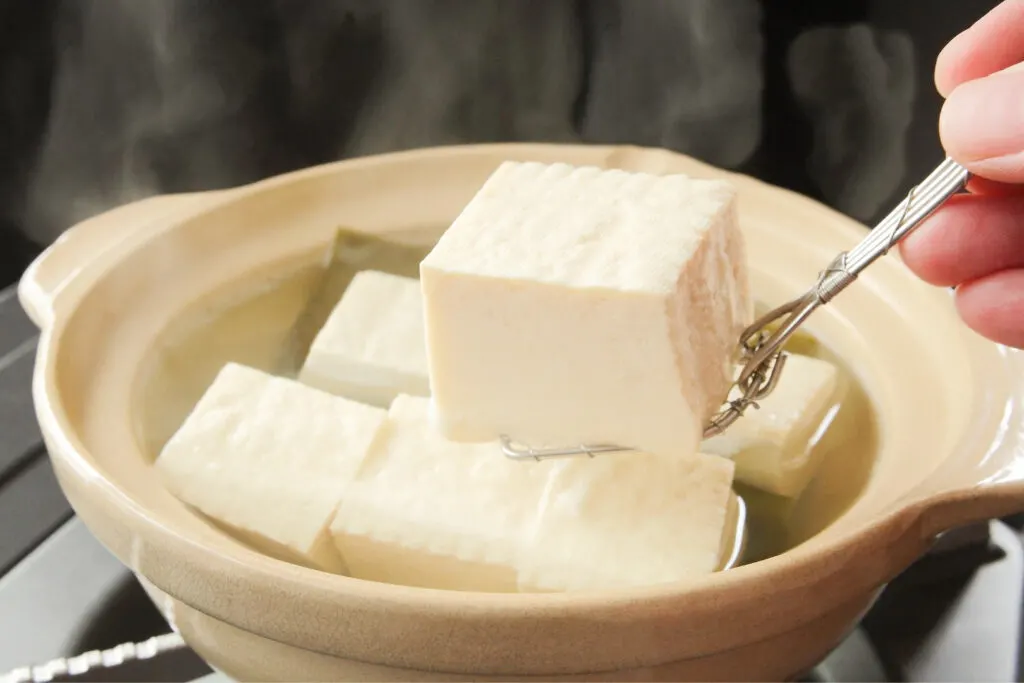
In summer, tofu is sometimes eaten cold as is with just soy sauce, some bonito flakes and a small garnish such as shredded nori, scallions, ginger, or wasabi. This way of eating tofu is called hiya-yakko (冷奴, ひや・やっこ). Tofu is also often eaten cold as part of a salad.
In Okinawa, firm tofu is used in a stir-fry dish with bitter gourd, called Gōyā Chanpurū. Mābō-dōfu, a spicy Chinese dish, is also very popular in Japan.
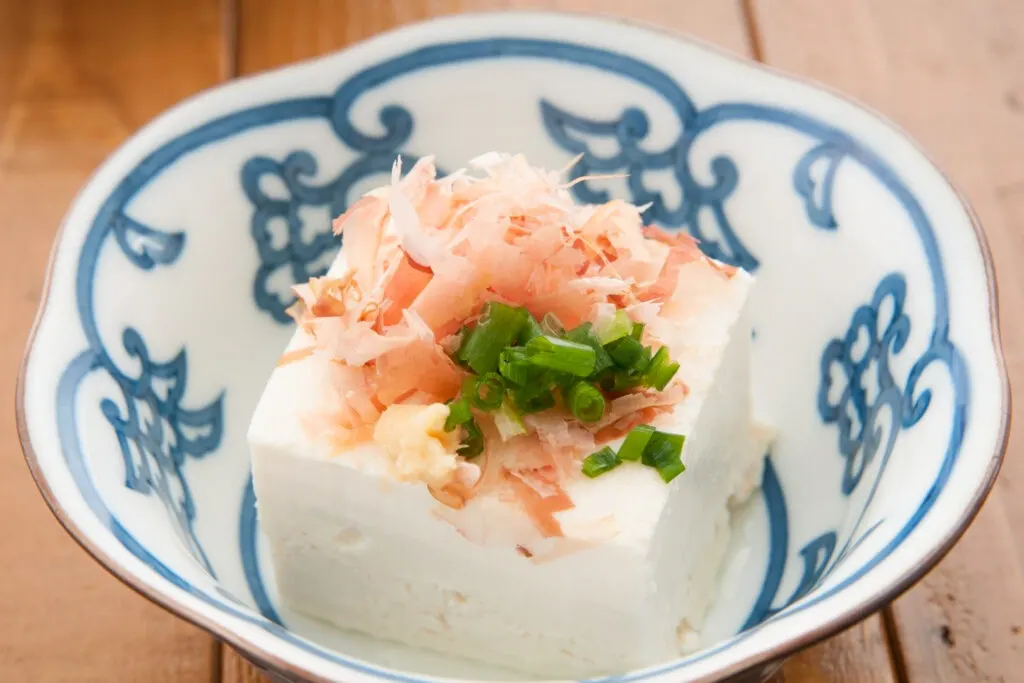
Tofu culture in Japan
Tofu has its origins in China, and it is said to have come to Japan during the Nara period (710-794) via Buddhist monks who were ambassadors to China.
The first time tofu appeared in Japanese literature was in the year 1183, when the Shinto priest at the Nara Kasuga Taisha recorded in his diary that it was part of the Shinto offering.
Tofu initially was eaten amongst monks, who developed Buddhist vegan shōjin cuisine, where tofu is prominently featured as a source of protein, and often used in a way that mimics meat. By the Muromachi period (1336-1573), it had spread to the aristocracy and samurai classes.
It was during the Edo period (1603-1868) that tofu became commonplace for regular folks. In 1782, a cookbook named “Tōfu Hyakuchin”(100 rare tofu), which listed 100 different ways to cook tofu became a huge hit, and it was so popular that two years later a sequel was published.
Until the late 1990s, there were family-run tofu shops in every neighborhood shōtengai – a street with lots of small shops – and I remember hearing the tofu-seller who went around neighborhoods on his bicycle selling tofu around 5pm, when housewives would start preparing dinner – blowing his horn and announcing his arrival – just like an ice cream van.
Types of tofu according to texture
Here I have categorized tofu according to their different textures. While there is no hard rule on what type of tofu should be eaten/cooked in what way, certain types of tofu are better suited for certain ways of cooking.
Note that like many compound words in Japan, when the word tofu is combined with a preceding word, the pronunciation often changes too, in this case to “dofu”, which you’ll often hear in spoken language.
If looking for the word on packaging, however, it is usually written as とうふ (tōfu) or 豆腐 (which can be pronounced either way).
Momen-dōfu (firm tofu)
Firm in texture, momen-dōfu (木綿豆腐, もめん・どうふ) comes in blocks and is often used in stews and nabe (hot pot), as it can retain its shape after being simmered in liquid and absorb any flavor. It is also good for stir-fries, but it is best to squeeze out the water before cooking, by putting a weight on top of the tofu for a while.
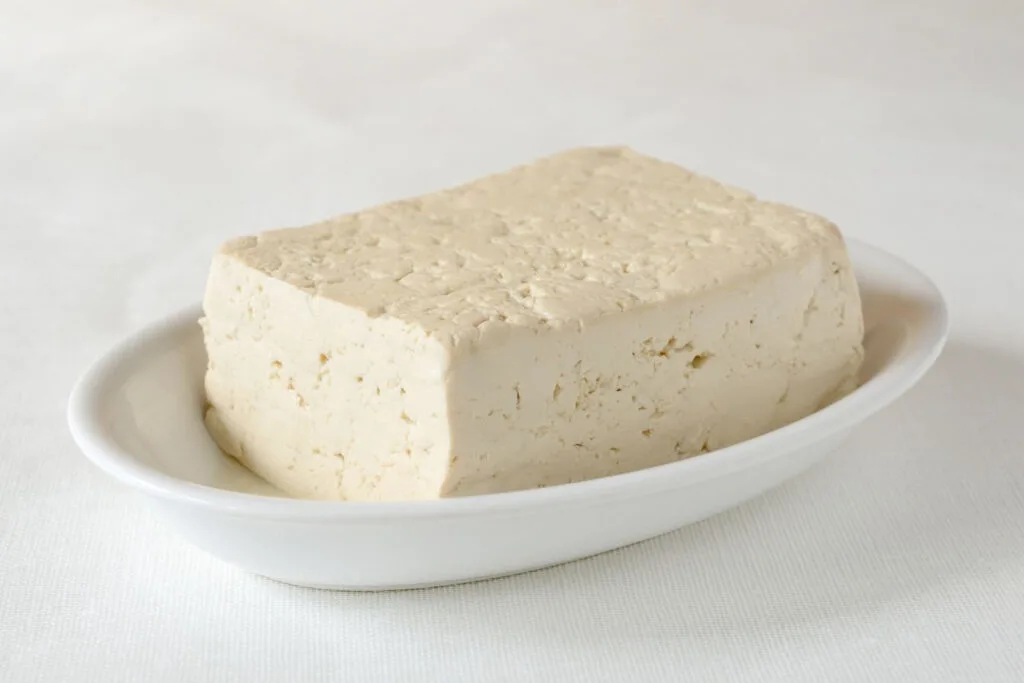
Kinugoshi-dōfu (silken tofu)
Silky smooth in texture, kinugoshi-dōfu (絹漉し豆腐, きぬごし・どうふ) also comes in blocks but breaks easily. It is commonly used in miso soups or eaten as is, cold (hiya-yakko) or warm.
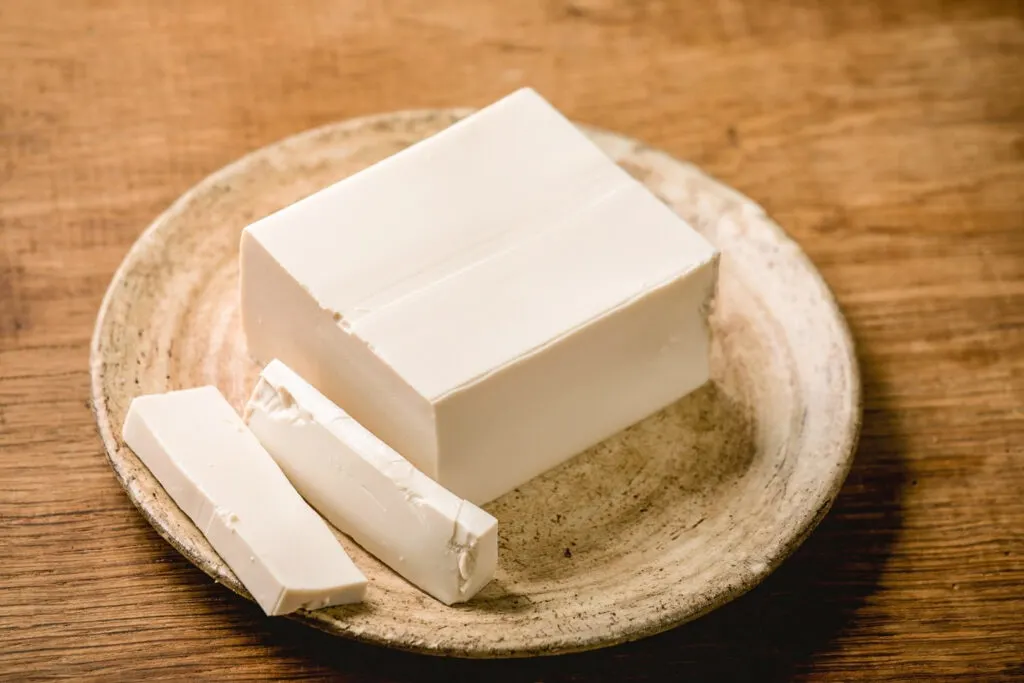
Oboro-dōfu/Yose-dōfu (soft tofu)
Extra-soft and pudding-like, oboro–dōfu (おぼろ豆腐, おぼろ・どうふ) or yose–dōfu (寄せ豆腐, よせ・どうふ) is enjoyed fresh and as is (warm or cold). It is a good way to enjoy the freshly made flavor of the tofu.
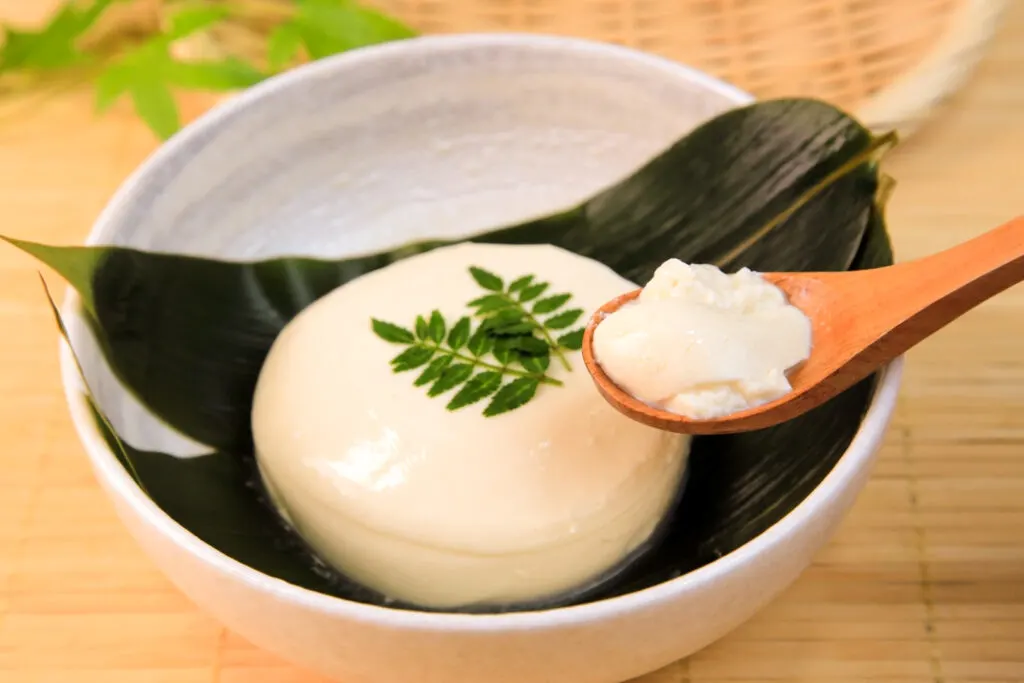
Yaki-dōfu (grilled tofu)
Yaki-dōfu (焼き豆腐, やき・どうふ) has a chargrilled mark on its surface. It is eaten or cooked like momen-dōfu (firm tofu).
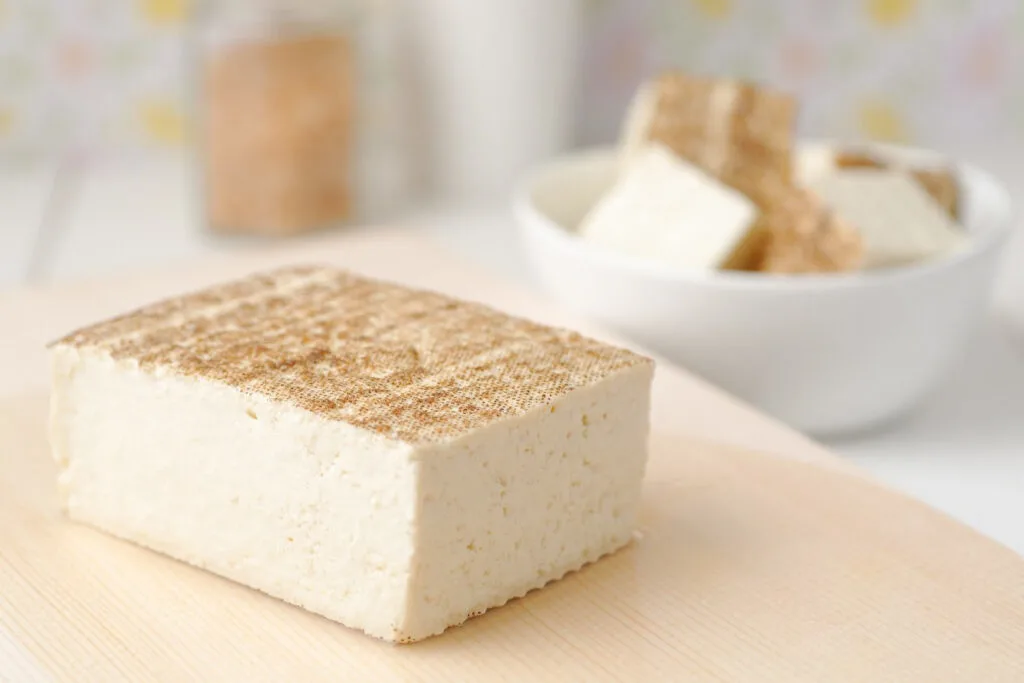
Fresh/packaged/long shelf-life tofu
Tofu is sold in different levels of freshness. If you’re lucky enough to have a tofu shop nearby, I highly recommend trying out freshly made tofu – it is very different from packaged or long shelf-life tofu.
Fresh tofu
Fresh tofu is sold at tofu shops and is not packaged, and is the best way to enjoy the flavor of the tofu served as is, with a bit of soy sauce or dashi and some garnishes.
Packaged tofu
Usually packaged in plastic packaging with water, this is the most common type of tofu sold at the supermarket.
Jūten tōfu (Long shelf-life pasteurized tofu)
Jūten tōfu (充填豆腐, じゅうてん・どうふ) is pasteurized, and is heated then cooled in its packaging. It usually comes packaged in paper cartons or comes vacuum-packed, and has a longer shelf-life than regular packaged tofu.
Kōya-dōfu (Freeze-dried tofu)
Kōya-dōfu (高野豆腐, こうや・どうふ) is a type of tofu that is frozen and then dried, and is a specialty of Koya-mountain which is famous for its Buddhist temples. It has a completely different texture from regular tofu; it is spongy and sweet. Similarly frozen and dried tofu is eaten in the Tohoku region but is called Shimidōfu (凍み豆腐, しみ・どうふ). Currently Nagano prefecture produces the most freeze-dried tofu.
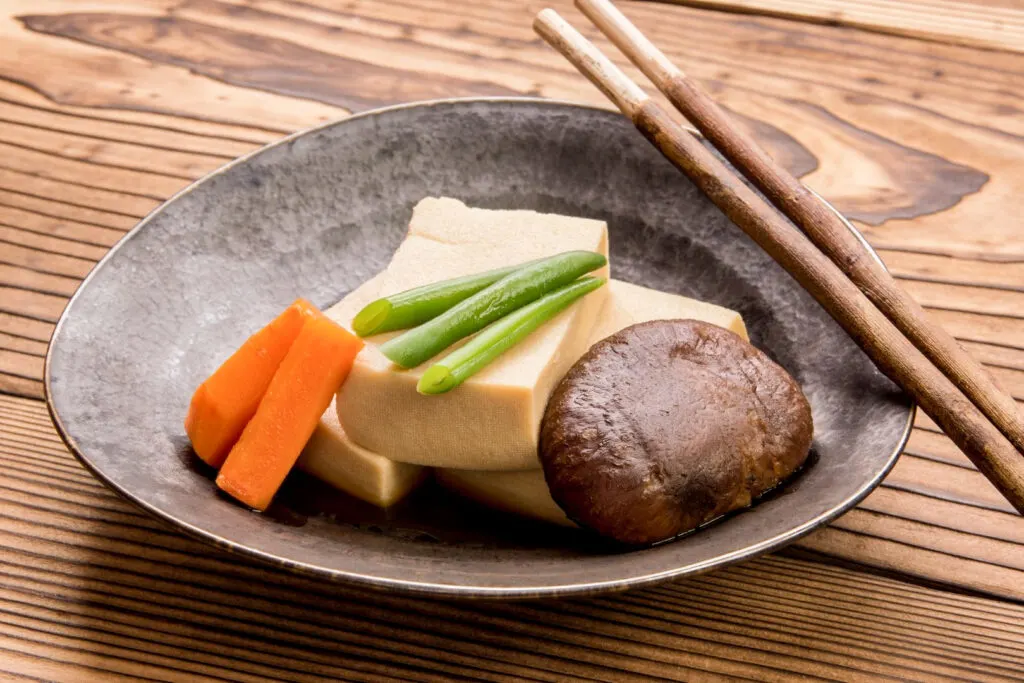
Types of deep fried tofu
Deep fried tofu is basically like a sponge and is excellent in absorbing flavor, so it is often used in stews, soups and stir-fries.
Aburaage
Aburaage (油揚げ, あぶらあげ) is thinly sliced and deep-fried tofu. It can be cut and opened like a pouch, or cut into strips. It is a common ingredient in miso soups or other types of soups such as Tonjiru or Kenchinjiru, and is a topping for Kitsune Udon.
This is also used as a shell for Inarizushi (a type of sushi), where the aburaage is simmered in soy and sugar to flavor it. Aburaage stuffed with mochi is a popular component in Oden.
My favorite way of eating it is to cut it into triangles, then stuff it with natto, brush with soy sauce and toast it.
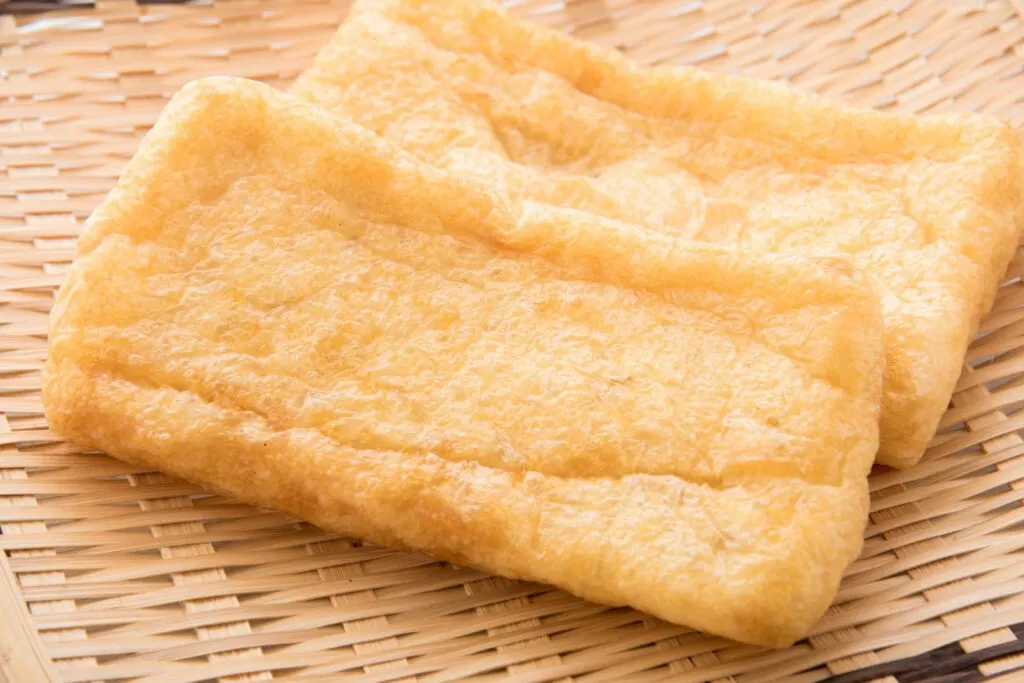
Atsuage
Atsuage (厚揚げ, あつあげ) is also deep-fried tofu, but this one is thicker and has a deep-fried outer shell with tofu flesh inside. This is the main ingredient for Agedashi-dōfu (揚げ出し豆腐, あげだし・どうふ), which is soaked in dashi and topped with grated daikon radish.
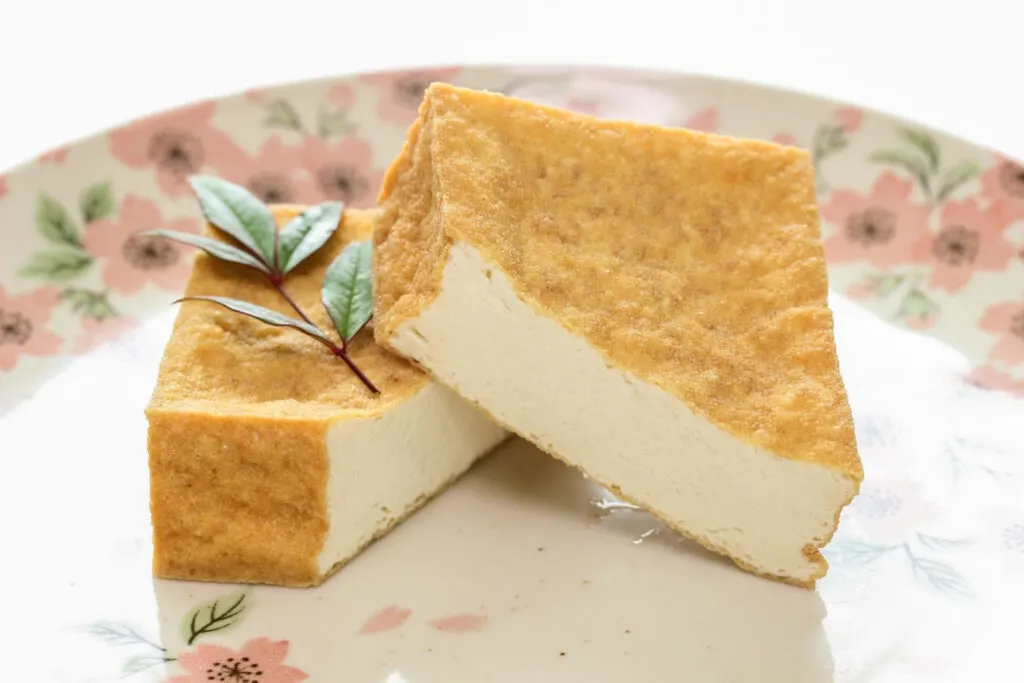
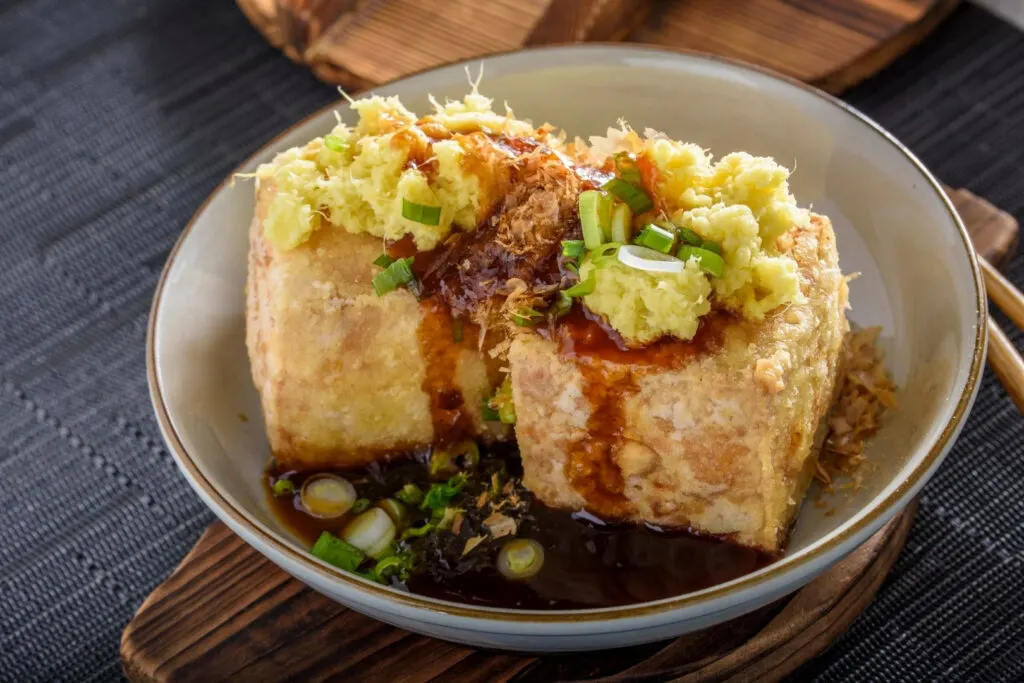
Ganmodoki
Ganmodoki (がんもどき) is a type of puffed tofu ball with bits of vegetables in it. It is often used in Oden or in Nimono, where it is simmered together with more vegetables.
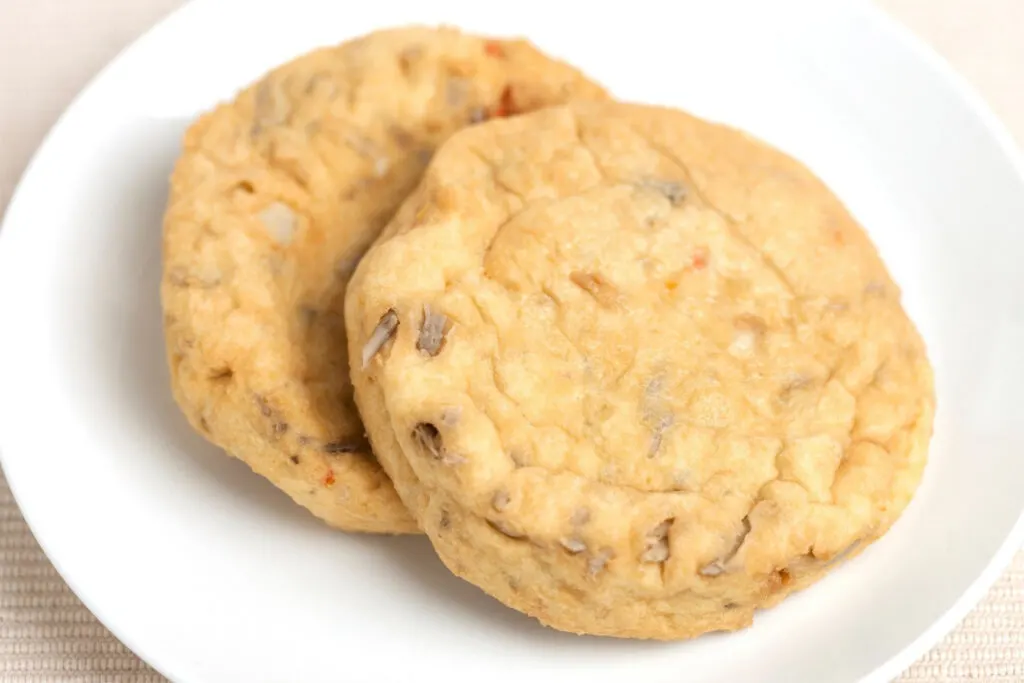
Tofu byproducts
While these are technically soy milk byproducts, as soymilk is a major component of tofu-making, we will share them here.
Yuba
Yuba (湯葉, ゆば), sometimes called tofu skin, is made by heating soy milk, and the skin that forms on the top (think of when heating milk) is yuba. It is famously eaten in Kyoto cuisine. It is sometimes sold dried as well.
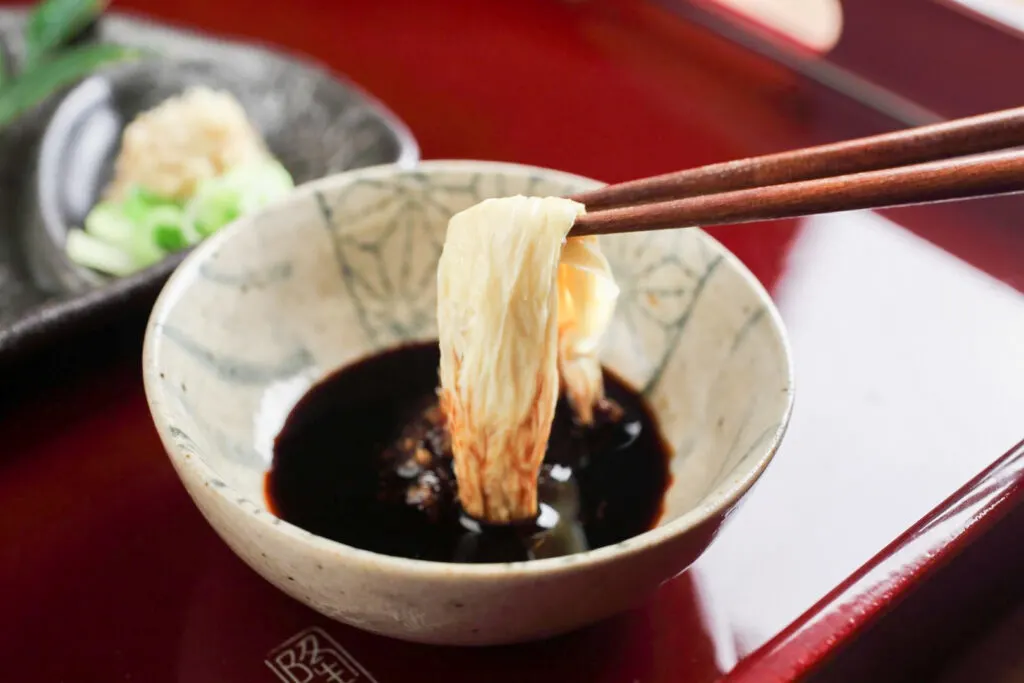
Okara
Okara (おから) is what is left after soy milk is extracted from soybeans. It is commonly cooked with strips of vegetables and konnyaku, and is also called Unohana (卯の花, うのはな). It contains high amounts of protein and nutrients.
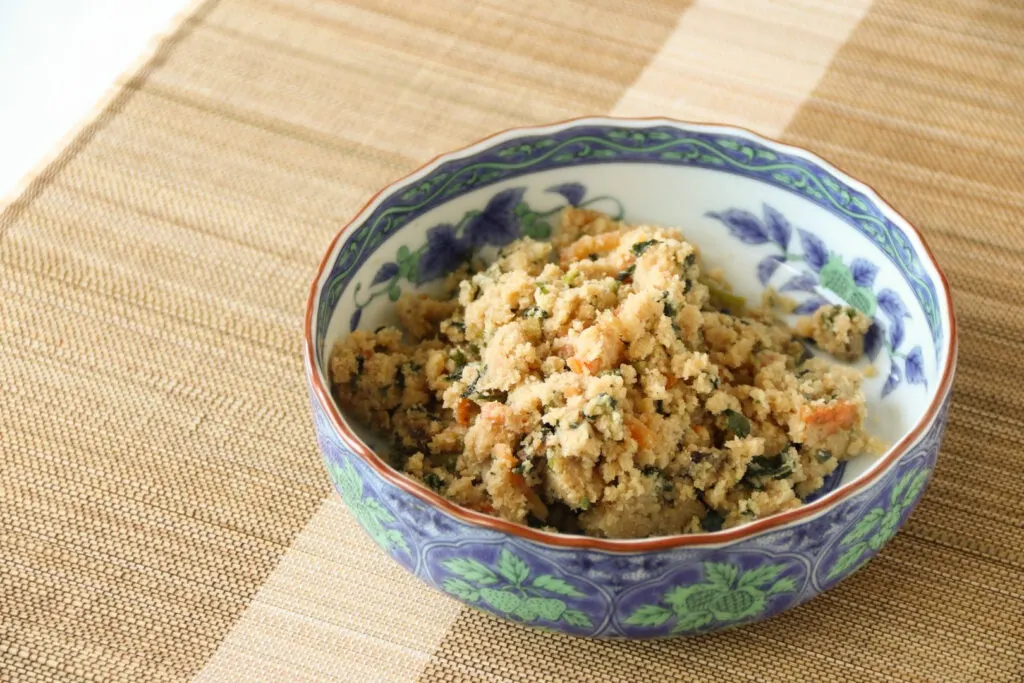
How tofu is made
So by now, you might be wondering how tofu is actually made.
First, the soybeans are sorted and washed to remove any impurities, followed by being soaked and then ground. Water is then added to the ground beans and heated to around 100°C to produce soy milk (the amount of water added is adjusted based on the desired thickness of the resulting soy milk).
At this point, the soy milk is extracted for the next step. What is leftover of the soybeans is the byproduct okara, as explained above.
To turn the soy milk into tofu, a coagulation agent called nigari is added. Nigari is produced from seawater, and mostly consists of magnesium chloride.
For Momen-dōfu (firm tofu), the soy milk is coagulated, then crushed, then pressed into blocks. The name Momen-dōfu (cotton tofu) comes from the muslin cloth that is used to drain it, which leaves a pattern on the surface of the tofu.
For Kinugoshi-dōfu, (silken tofu), the soy milk is coagulated and then shaped into blocks, without the pressing process. Although it is named Kinu-goshi (silk strained) tofu, it is not actually strained using silk, it is a reference to the silky texture of the tofu.
Have you eaten or do you eat tofu? What are your favorite types of tofu and dishes to use them in?
Pin me for later
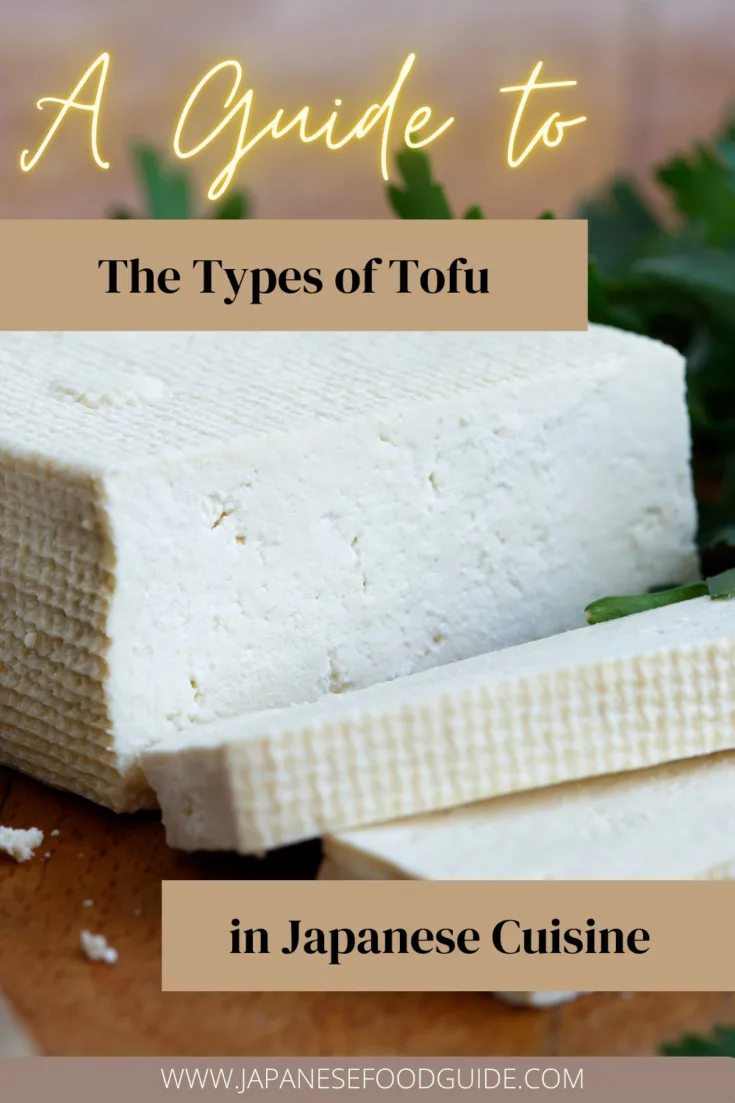
Madoka Suganuma is a freelance qualitative market researcher and a cultural insights analyst based in Tokyo with an expertise in Food & Beverages.
Having split her time between Europe and Tokyo in her formative years, Madoka is on a mission to uncover and provide insight into Japanese culture and people. Madoka enjoys learning about different cultures through food and hopes that readers can have fun learning about Japanese food culture through Japanese Food Guide.

Heidi
Tuesday 11th of January 2022
Fantastic!! I’ve eaten all these for years without really knowing their exact names. This is a super handy guide for learning them, finally. Thanks, Madoka!
Shamalee Vanderpoorten
Tuesday 11th of January 2022
Love this write up, Madoka. Okara or the residue from the soy milk production is what is used in the Indonesian product, Tempeh gembus.... I love it!